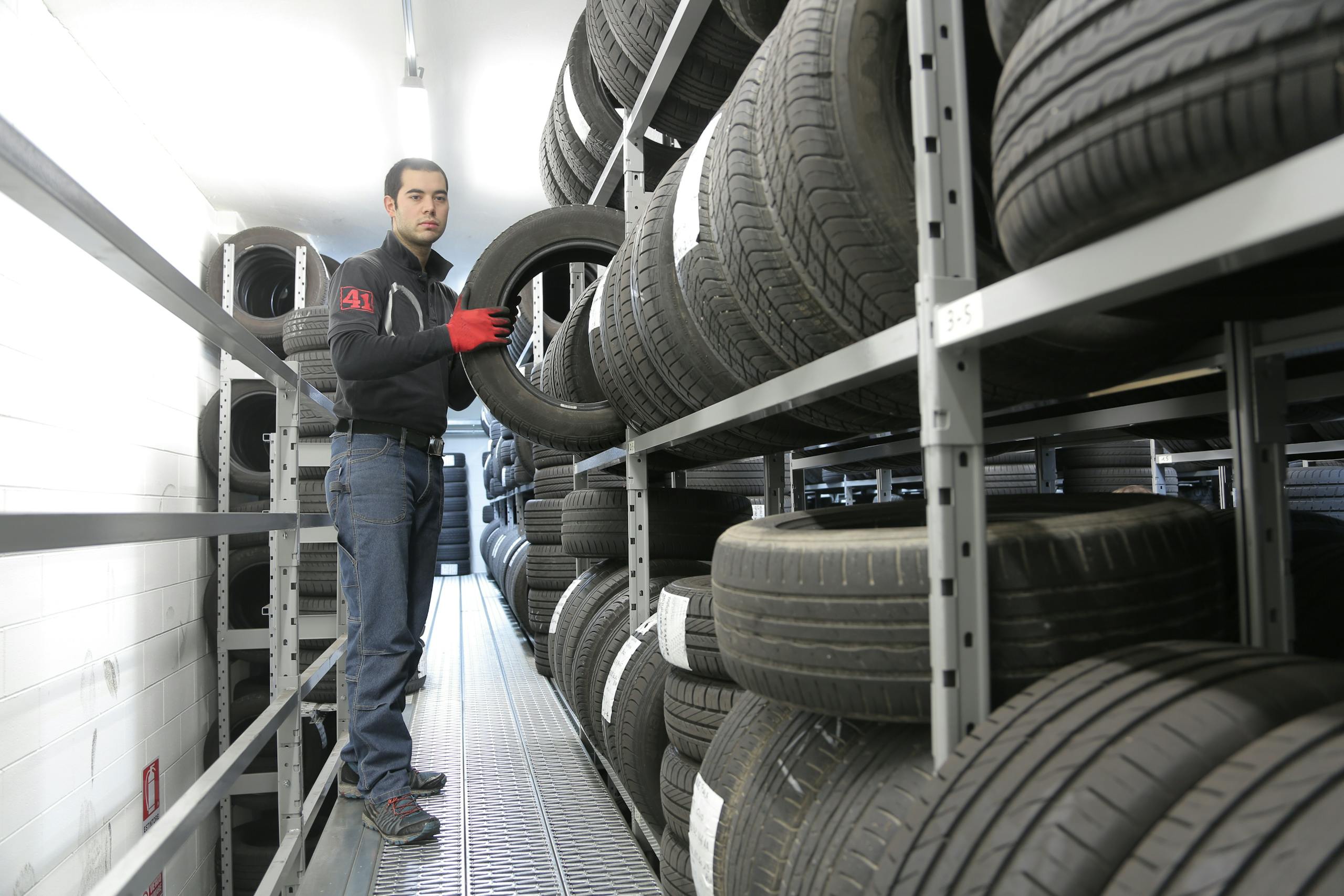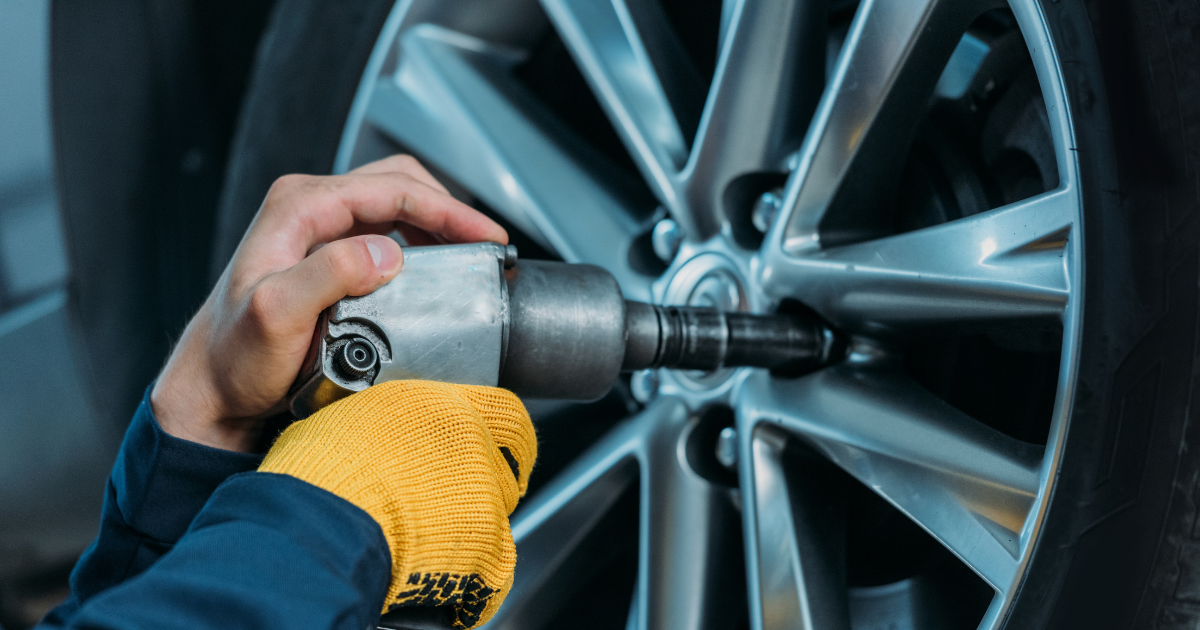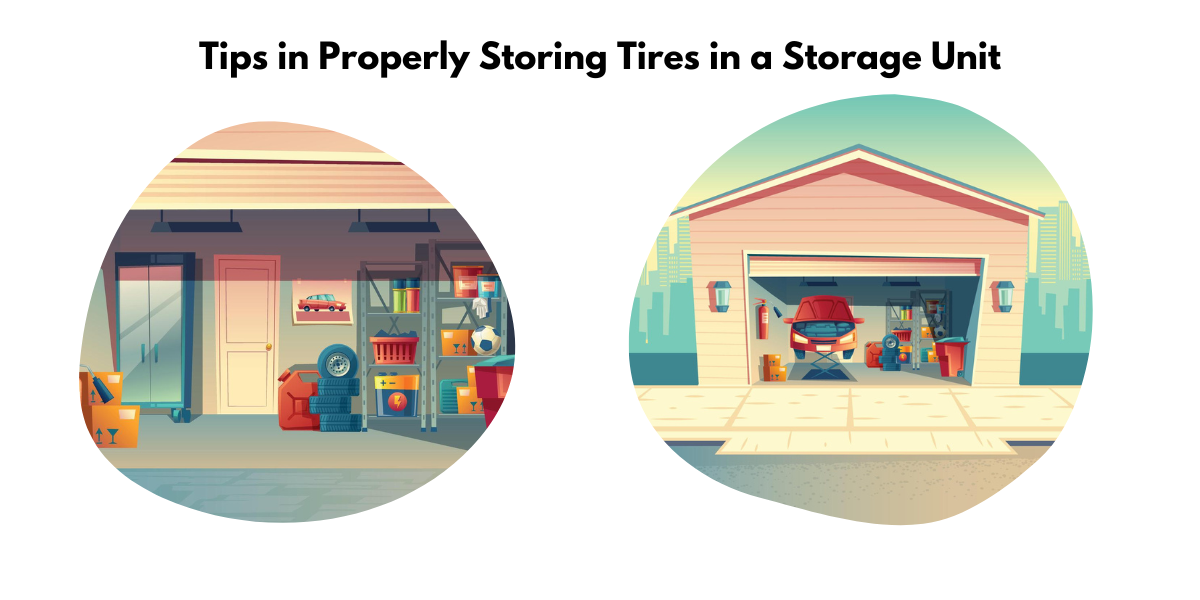How to Store Tires in a Storage Unit: The Best Way to Keep Your Tires in Good Shape Even in Long-Term Storage
How to Store Tires in a Storage Unit
If you’re looking for a way to store your tires, you might be wondering where to start. It can be frustrating due to their size and the extra steps needed to keep them in good shape. However, you might not have a choice if you have a set of winter tires for your car. This article will give you tips on storing tires in a storage unit and keeping them in good condition.
It’s not uncommon to see tires stored outside without protection, but those are typically not used on a road vehicle. Our storage customers often don’t know how to store their tires and come to us for advice. You can keep your tires in good shape even while in storage by following these simple tips.
People also store tires in storage units. While this is an option, it is not the best way to keep your tires in good shape. The temperature fluctuations in a storage unit can damage the tires, and if the unit is damp, it can cause mold and other safety hazards.
Tires are sensitive to various environmental elements, including weather, sun, temperature, and time. All of these factors will eventually degrade the tires, but there are things we can do to delay the process. For example, keeping your tires in a storage unit with the right conditions can help preserve them for a longer period.
On the other hand, keeping a fresh set of tires in good condition can add years to their lifespan. The best way to store tires is in a dry, cool environment that slows down the aging process. It will help keep them in good condition when you need them next.
It’s important to store your tires in a storage unit the right way if they suffer from dry rot and other damage. If you don’t ese, tips will show you how to prevent that and keep your tires in good condition.

How to correctly store tires
When storing tires for an extended period of time, it is important to store them the correct way. Failing to do so can lead to a number of problems, including decreased tire life and potential damage to the tires. There are a few different ways you can store your tires, but the most effective is by hanging them or stacking them in a corner with some space between each tire. If you are not going to use your stored tires for an extended period of time, it is important to move them around every few months so that they rest on their side.
When storing tires, it is important to keep them in a dry and cool area. The following are some tips on how to store tires correctly:
Clean them
The tires should be cleaned with detergent and water, then dried. Covering the tires before storing them can help keep oils from drying out. Tire totes are available for specific tire sizes to make storage easier. Avoid storing your tires in chemicals such as ArmourAll(r) before putting them in storage. Store your tires somewhere cool and dark, away from direct sunlight and heat sources like electric generators. When choosing outdoor tire storage, create a waterproof covering to moisture build-up. For aesthetic reasons, it’s best to store rubber with its raised white lettering facing each other.
No dressing required
It is important to remember not to use any dressing or gloss product when storing tires. Petroleum-based products can damage the tire and should be avoided. A simple soap and water cleaning will do the trick – the dealer will take care of your needs within 24 hours. There are three types of service at the dealer: oil change, tire change over, or a seasonal tune-up. Select your driver category to determine how long you plan to keep the vehicle, then select the tires you need based on what type of terrain they are best suited for and what attributes are most important to you, such as safety and durability. Share your vehicle’s make, model, year, and trim when answering questions about it to find a fit for your needs. Tires should be stored at 40 degrees Fahrenheit; if a tire is mounted on the inside, avoid storing it with windows facing outward or in direct sunlight. Tires should not be stored on their sides as this will eventually lead to premature wear and tear on the tire’s sidewall.
Bag them up
When storing tires, it’s important to keep them in a large, airtight plastic bag. This will help protect the oils in the rubber from evaporating. You can remove as much air from the bag as possible to reduce evaporation. If you vacuum-seal the tires, it will help keep them in the best possible condition.
Plastic tire bags also help protect the oils in rubber from UV rays, which can cause them to dry out and crack over time. However, totes are not always airtight, so wrapping tires in plastic before placing them in the tote is good. Totes should be wrapped in plastic first, then placed into the totes.
Avoid the sun
The sun is one of the biggest causes of rubber deterioration. You can limit exposure to direct sunlight when possible, especially on outdoor tires that would be exposed outside for long periods. UV rays and the sun’s heat are two of the biggest causes of rubber deterioration.
Cover your tires with a protective tarp to keep them from drying out and deteriorating prematurely. Tire storage bags will keep tires from the sun and away from bugs. If you want to store your tires off of a car or on the ground, sun tube cover is a good idea to protect them from debris in the treads.
Choose your location
When it comes to storing your tires, where you put them is just as important as how you store them. The tires should be stored in a climate-controlled area. This means that the temperature and humidity levels should be consistent and not too hot or cold. The sun or any type of heat source should also be avoided, as they can quickly dry out and become brittle.
If you don’t have room for your tires inside your home, consider looking for a storage facility near you. Make sure to ask about climate control before signing up. You don’t want your tires to suffer because of bad storage conditions!
Avoid chemical exposure
When storing tires, it is important to be aware of the chemicals they may be exposed to. Ozone, in particular, can degrade the rubber’s weathering agents and cause premature cracking.
Solvents, fuels, and lubricants should also be avoided, as they can damage the rubber. In addition, tires should not be cleaned with petroleum-based products.
It is also important to store tires vertically or with the valve stem down to prevent them from touching the ground. In addition, they should not touch any metal part of a vehicle when installed.
Protect white rubber
When storing tires, it is important to protect the white rubber. The easiest way to do this is by making sure that the white surfaces of the tires are touching other white surfaces. This will help to prevent staining and discoloration.
Tires are made of two different rubbers: black on the front and non-staining on the back. When stacking tires, make sure they are mounted with the non-staining side facing outwards so that it does not come into contact with any other surface.
If you need to store unmounted tires, it is best to place them sidewall to sidewall to avoid any staining or marking on the whitewalls. You can also use a barrier such as a piece of wood between each tire.
Whichever you store your tires, make sure they are in an airtight space away from moisture which can cause mold and rot. Additionally, avoid storing your tires near gas, antifreeze, or other toxic materials, which could damage them over time.
Stand, stack, hang?
There are three main ways to store tires: upright, stacked and hung. The best option is to stand them upright, preserving their shape and keeping the tire’s air. If you must stack them, do so with the valve stem at the bottom so that any liquids will drain out. Never hang unmounted tires as this can distort and damage them. You can store your tires at a professional tire dealer, but it’s recommended to get them checked before mounting for another season of driving.
Store them vertically or horizontally
When storing tires, you have two main options: store them vertically or horizontally.
Storing the tires vertically will take up less floor space in your garage while stacking one tire on top of the other minimizes the square footage they will take up on your floor but makes a more compact footprint overall.
It is widely accepted that storing tires vertically is better for minimizing their footprint and maximizing storage space in your garage. If you’re short on space, however, you can stack them horizontally – be careful not to put too much pressure on the tire and cause it to distort physically.
Professionally inspect the tires before remounting them on a vehicle
If you are unfamiliar with dry rot or crazing symptoms, have a professional look at your tires for you. These conditions can be difficult to spot and may shorten the lifespan of your tires.
It is recommended to remove the tires from the vehicle for proper long-term storage to get an idea of what conditions your tires are stored in and avoid stresses on them like vehicle weight, temperature fluctuations, etc. You may also want to consider rotating your tires every few years, which will help distribute any wear evenly.
Another benefit of removing your tires for storage is that when it’s time to be installed again, they may be rotated from their previous positions. When rotating tires, it is important to note the placement of the wheels and make a mental note; this way you’ll know how to put them back on correctly.

How to keep tires from dry rotting?
One of the most common ways to ruin tires is through dry rotting. This occurs when the tires are not properly cleaned and stored.
There are many ways to clean tires, but one of the most important things to remember is not to use harsh chemicals or petroleum-based cleaners. These can damage the rubber and cause the tires to dry rot. Instead, use a mild soap and water mixture and rinse well with clean water. You can also use a brush rather than an aerosol spray if you prefer.
How long can tires sit before dry rot?
Tires can sit for a long time before dry rot if kept clean, dry, and free from debris. A simple means of eliminating the risk of dry rot is to ensure that your tires are completely dry before storing them in their airtight plastic bag. Store-bought cleaners may not be stronger and more effective. Look for cleaners that do not contain petroleum or use plain soap to be on the safe side.
Can I stack my tires?
Yes, you can stack your tires as long as they are not too high. Of course, the best way to store your tires is upright, but it’s acceptable to stack them if needed. Just make sure to rotate the position of your tires every month so that they don’t become deformed.
How long can tires be stored?
How long can tires be stored? This is a question that many people have, and the answer may surprise you. Contrary to popular belief, tires don’t need to be ridden every day to stay in good condition. Instead, they can be stored for months as long as they are taken care of properly.
You should keep in mind a few things when storing your tires. First of all, it’s important not to stack them too high; if you do, the weight of the topmost tires will cause them to flatten out over time. Additionally, it’s best to store your tires vertically whenever possible- this takes up less space and helps prevent any damage.
When storing your tires for an extended period, it’s also important to ensure that the sidewalls are facing the correct direction. For example, black sidewalls should always be stored back-to-back with other black sidewalls, while white sidewalls should be stored back-to-back with other white sidewalls. This prevents any dirt or dust from building up on the rubber and causing damage over time.
If you’re looking for a longer-term storage solution for your car’s tires, removing them from the car is the best option. This way, they won’t be exposed to any extreme temperatures or weather conditions that could damage them. Just put them in a cool, dry place- a storage unit is perfect for this!
- Garage Organization: How to effectively organize your garage for storage - February 1, 2023
- How to Store Tires in a Storage Unit: The Best Way to Keep Your Tires in Good Shape Even in Long-Term Storage - September 24, 2022
- Why Self Storage? The Benefits of Using Self Storage Units - August 23, 2022







